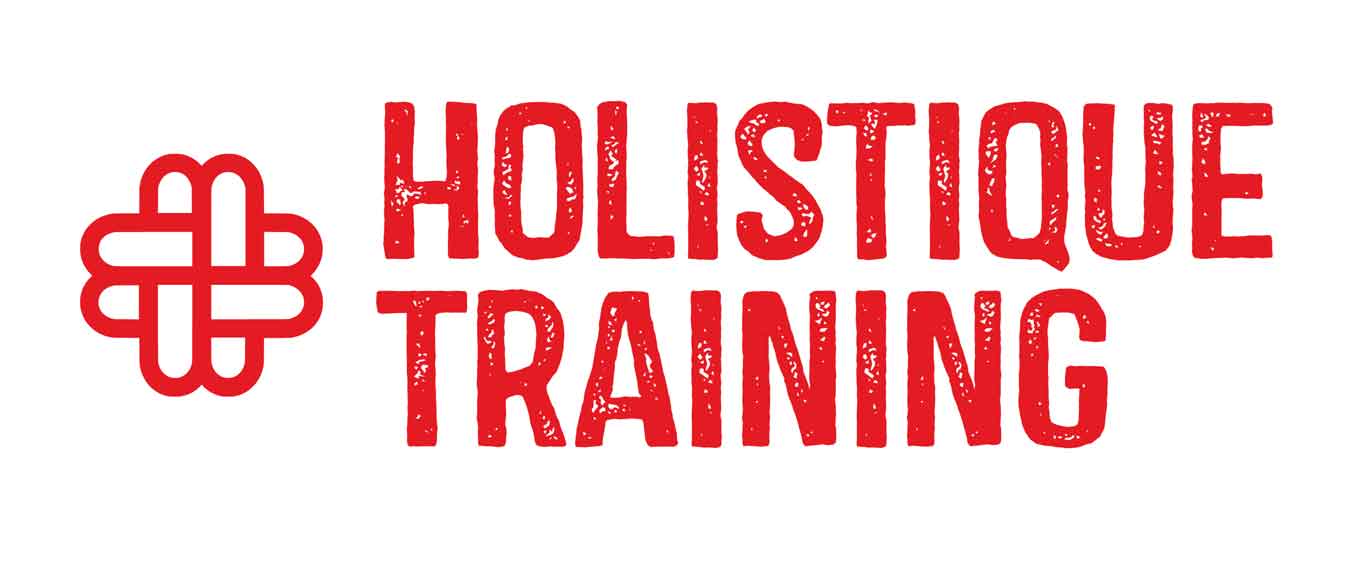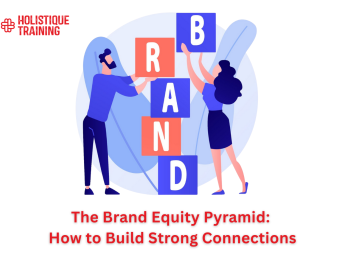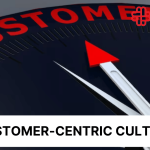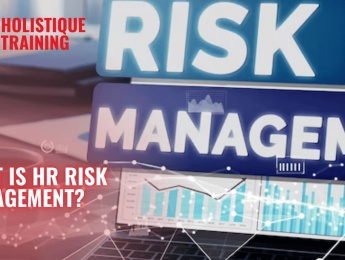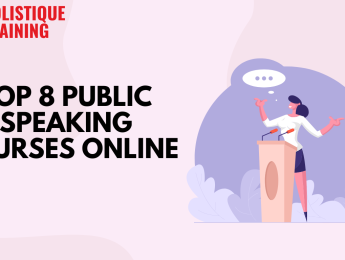- Table of Contents
- Introduction
- What is Brand Equity?
- Brand Equity vs. Brand Value
- The 4 Pillars of Brand Equity
- Brand Awareness
- Perceived Quality
- Brand Associations
- Brand Loyalty
- What is Keller’s Brand Equity Model?
- The 4 Levels of Keller’s Brand Equity Pyramid
- Breaking Down the Pyramid: How the Levels Work Together
- Why Keller’s Brand Equity Model is Effective
- How to Use the Keller Model for Your Business
- 1. Start with Research: Understand Your Audience and Market
- 2. Build a Strong Foundation: Brand Identity
- 3. Define Your Brand Meaning: Performance and Imagery
- 4. Foster Positive Brand Responses: Judgments and Feelings
- 6. Measure and Adjust Your Strategy
- Why is Brand Equity Important?
- 1. Customer Loyalty and Retention
- 2. Ability to Charge a Price Premium
- 3. Market Differentiation
- 4. Business Growth and Expansion
- 5. Resilience During Crises
- 6. Attracting and Retaining Talent
- 7. Financial Benefits and Brand Valuation
- Brand Equity Challenges
- 1. Negative Brand Equity
- 2. Shifting Consumer Preferences
- 3. Increased Competition
- 4. Inconsistent Brand Messaging and Experience
- 5. External Crises and Uncontrollable Factors
- 6. Overextension or Brand Dilution
- 7. Difficulty in Measuring Brand Equity
- 8. Digital Disruption and Social Media Risks
- Staying Relevant in the Digital Age
- Take the Next Step: Enroll inDeveloping a Successful Brand Image
- Conclusion
Introduction
A brand is more than just a logo, a tagline, or a product—it’s a promise, an experience, and a relationship. Building a strong brand requires more than just marketing; it demands a deep understanding of how consumers perceive and connect with your brand. One of the most effective frameworks for understanding and building strong brands is the Brand Equity Pyramid, also known as Keller’s Customer-Based Brand Equity (CBBE) Model. This blog post will explore the concept of brand equity, the difference between brand equity and brand value, the four pillars of brand equity, and how Keller’s model provides a roadmap for creating meaningful, lasting connections with customers. We’ll also discuss how businesses can leverage this model, navigate challenges like negative brand equity, and stay relevant in the digital age.
By the end of this post, you’ll have a comprehensive understanding of why brand equity matters and how to use the Brand Equity Pyramid to strengthen your brand’s position in the market.
What is Brand Equity?
At its core, brand equity refers to the value a brand brings to a product or service beyond its functional benefits. It’s the set of perceptions, emotions, and associations that consumers have with a brand. Strong brand equity means customers are more likely to choose your brand over competitors, even if your product is priced higher or offers similar features.
Think of a brand like Apple. When people buy an iPhone, they aren’t just purchasing a phone—they’re buying into a lifestyle, a promise of quality, and the prestige associated with the Apple brand. This emotional connection and loyalty are the essence of brand equity.
Brand equity is built over time through consistent messaging, positive customer experiences, and delivering on promises. It’s the reason why some brands can charge a premium for their products while others struggle to compete purely on price.
Brand Equity vs. Brand Value
While brand equity and brand value are often used interchangeably, they are distinct concepts. Understanding the difference is crucial for businesses looking to build a strong brand.
- Brand Equity is consumer-centric. It’s about how customers perceive and interact with your brand. Positive brand equity means customers have favorable opinions and strong loyalty toward your brand, while negative brand equity can result from poor customer experiences or scandals.
- Brand Value, on the other hand, is business-centric. It’s the financial worth of a brand as an asset. Brand value is often calculated based on a combination of brand equity, market performance, and revenue potential.
For example, Coca-Cola’s brand equity is reflected in the emotional connection people have with the brand—nostalgia, happiness, and trust. Coca-Cola’s brand value, however, is the dollar figure that represents the brand’s contribution to the company’s overall worth.
In essence, brand equity drives brand value. The stronger your brand equity, the more valuable your brand becomes as a business asset.
Aspect | Brand Equity | Brand Value |
Definition | The perception, emotions, and loyalty customers associate with a brand | The financial worth or monetary valuation of a brand in the marketplace |
Focus | Customer-driven; focuses on intangible factors like trust, recognition, and loyalty | Business-driven; focuses on tangible financial metrics like revenue and profit |
Measurement | Measured through customer surveys, brand awareness, loyalty, and sentiment | Measured through financial metrics like market share, price premium, and valuation |
Impact | Impacts customer behavior, loyalty, and emotional connection to the brand | Impacts the company’s financial performance and attractiveness to investors |
Example | A brand like Nike has strong equity due to its emotional connection with customers | Nike’s brand value is reflected in its high market valuation and profitability |
The 4 Pillars of Brand Equity
Building strong brand equity requires a strategic approach. There are four key pillars that serve as the foundation for brand equity:
Brand Awareness
The first step in building brand equity is ensuring customers recognize and recall your brand. Awareness is the foundation of all other brand equity components. In fact,50%of consumers are more likely to purchase from brands they are familiar with. A brand that no one knows about cannot build equity.
Perceived Quality
This pillar focuses on how customers perceive the quality of your products or services. High-quality perceptions lead to trust and loyalty, while poor-quality perceptions can erode brand equity.
Brand Associations
Brand associations are the mental connections customers make with your brand. These can include emotions, experiences, and attributes related to your brand. For example, Nike is associated with athleticism, inspiration, and performance.
Brand Loyalty
The ultimate goal of brand equity is to create brand loyalty through loyal customers who consistently choose your brand over competitors. Loyal customers not only generate repeat business but also become brand advocates.
These pillars are interconnected and must work together to create strong brand equity. Without awareness, there can be no associations. Without perceived quality, loyalty will falter. Each pillar reinforces the others, creating a robust foundation for your brand.
What is Keller’s Brand Equity Model?
Keller’s Brand Equity Model, also known as the Customer-Based Brand Equity (CBBE) Model, is a strategic framework developed by marketing professor Kevin Lane Keller. It is widely regarded as one of the most comprehensive and practical models for understanding and building brand equity. The model is designed to help businesses create strong, meaningful, and lasting relationships with their customers by focusing on how customers perceive and interact with the brand.
The CBBE Model is represented as a pyramid, with four levels that reflect the progression of a customer’s relationship with a brand. Each level builds on the one below it, culminating in the ultimate goal of brand resonance—a deep, emotional connection between the brand and its customers. Let’s break down each level of the pyramid, its components, and what it means for building brand equity.
The 4 Levels of Keller’s Brand Equity Pyramid
Brand Identity: Building Awareness (Who are you?)
At the base of the pyramid liesbrand identity, which focuses on creating awareness and recognition. This is the foundation of all brand equity efforts. If customers don’t know who you are or what you stand for, they cannot form a relationship with your brand.
The goal at this stage is to ensure customers can easily recognize and recall your brand in various contexts. This involves creating a strong visual identity (logo, colors, packaging), a memorable name, and consistent messaging across all platforms. Brand identity also includes establishing your brand’s category—what type of product or service you offer—and how it fits into the customer’s life.
For example, Coca-Cola has a universally recognizable logo and red color scheme that immediately triggers brand recall. Similarly, Nike’s “swoosh” logo and “Just Do It” tagline are iconic elements of its brand identity.
Key Question: Are customers aware of your brand, and can they easily identify it among competitors?
Brand Meaning: Communicating What You Stand For (What are you?)
Once customers are aware of your brand, the next step is to define what your brand means to them. This level focuses on two key dimensions of brand meaning:
- Performance: The functional benefits of your product or service. This includes attributes like quality, reliability, durability, and price. Customers evaluate whether your brand delivers on its promises and meets their needs.
- Imagery: The emotional and symbolic associations customers have with your brand. This includes the lifestyle, values, and personality your brand represents.
For example, Volvo is synonymous with safety and reliability, while Disney evokes feelings of magic, joy, and nostalgia. Both functional performance and emotional imagery are crucial for shaping how customers perceive your brand.
Key Question: What does your brand stand for, and how do customers perceive its functional and emotional benefits?
Brand Response: Evaluating Customer Reactions (What about you?)
At this stage, the focus shifts to how customers respond to your brand. This level includes two critical components:
- Judgments: These are the rational evaluations customers make about your brand. Judgments include perceptions of quality, credibility, innovation, and relevance. Customers assess whether your brand is trustworthy, reliable, and worth their investment.
- Feelings: These are the emotional responses customers have toward your brand. Positive feelings like joy, pride, trust, and excitement strengthen the customer’s connection to the brand.
For example, Apple customers often associate the brand with innovation and creativity (judgments), as well as feelings of prestige and satisfaction when using its products.
Key Question: How do customers feel about your brand, and what judgments do they make about its quality and credibility?
Brand Resonance: Achieving Loyalty and Connection (What about you and me?)
At the top of the pyramid lies brand resonance, the ultimate goal of Keller’s Brand Equity Model. Resonance represents the strongest level of connection between a brand and its customers. It goes beyond loyalty to create a deep psychological bond that makes customers feel the brand is an integral part of their lives.
Brand resonance includes four key dimensions:
- Behavioral Loyalty: Customers consistently buy your brand and recommend it to others.
- Attitudinal Attachment: Customers feel emotionally attached to your brand and view it as special or irreplaceable.
- Sense of Community: Customers feel a sense of belonging to a larger group of people who share their love for the brand.
- Active Engagement: Customers actively engage with your brand beyond purchasing, such as participating in social media discussions, attending events, or creating user-generated content.
For example, Harley-Davidson has achieved brand resonance by fostering a strong sense of community among its customers, who identify as part of the “Harley family.” Similarly, Starbucks encourages active engagement through its rewards program and social media interactions.
Key Question: Do customers feel a deep connection to your brand, and are they actively engaged with it?
Breaking Down the Pyramid: How the Levels Work Together
The levels of Keller’s Brand Equity Pyramid are not isolated—they build on one another to create a cohesive journey for the customer.
- Without brand identity, customers won’t know who you are, making it impossible to build meaning, response, or resonance.
- Without brand meaning, customers won’t have a clear understanding of what your brand stands for, leading to weak responses.
- Without brand response, customers won’t develop the emotional and rational connection needed to move toward resonance.
- Without brand resonance, your brand will struggle to achieve long-term loyalty and advocacy.
By systematically addressing each level, businesses can create a strong, customer-centric brand that resonates deeply with their audience.
Why Keller’s Brand Equity Model is Effective
Keller’s model is effective because it focuses on the customer’s perspective. It emphasizes the importance of understanding how customers perceive, experience, and interact with your brand. This customer-centric approach ensures that businesses build brands that are not only recognizable but also meaningful and emotionally engaging.
Additionally, the model provides a clear roadmap for building brand equity, making it easier for businesses to identify gaps and opportunities in their branding strategies. Whether you’re launching a new brand or revitalizing an existing one, Keller’s Brand Equity Model offers a practical framework for success.
By understanding and applying Keller’s Brand Equity Model, businesses can create a brand that not only stands out in the market but also builds lasting relationships with customers—relationships that drive loyalty, advocacy, and long-term growth.
How to Use the Keller Model for Your Business
Keller’s Brand Equity Model isn’t just a theoretical framework; it’s a practical tool that businesses of all sizes can use to systematically build strong, customer-focused brands. By working through each level of the pyramid, you can create a brand that resonates deeply with your audience and drives long-term loyalty, advocacy, and growth. Below, we’ll break down how to apply the model to your business step by step, with actionable strategies for each stage of the pyramid.
1. Start with Research: Understand Your Audience and Market
Before you begin building your brand equity, you need to understand your starting point. This means conducting thorough research on your target audience, competitors, and current brand perception.
- Know your audience: What are their needs, preferences, and pain points? What values and emotions resonate with them?
- Analyze your competitors: How are they positioning their brands? What are their strengths and weaknesses?
- Evaluate your current brand identity: Are customers aware of your brand? What associations do they have with it?
Tools like customer surveys, focus groups, social media listening, and competitor analysis can provide valuable insights. This research will serve as the foundation for all your branding efforts.
2. Build a Strong Foundation: Brand Identity
The first level of the pyramid is all about creating brand awareness. To ensure customers recognize and recall your brand, focus on the following:
- Visual identity: Develop a memorable logo, color palette, and typography that reflect your brand’s personality.
- Messaging: Create a clear and consistent brand voice that communicates who you are and what you stand for.
- Positioning: Define your brand’s unique value proposition (UVP)—what makes you different from competitors—and communicate it effectively.
- Consistency: Ensure your branding is consistent across all touchpoints, from your website and social media to packaging and advertising.
3. Define Your Brand Meaning: Performance and Imagery
Once customers know who you are, the next step is to communicate what your brand stands for. This involves building both functional and emotional associations:
- Performance (functional benefits): Highlight the tangible benefits of your product or service. What problem does it solve? How does it deliver value? Ensure your offerings consistently meet or exceed customer expectations.
- Imagery (emotional benefits): Create a brand personality and story that resonates with your audience on an emotional level. Use visuals, storytelling, and marketing campaigns to evoke positive associations.
Actionable Tips:
- Showcase testimonials and case studies to demonstrate performance.
- Use storytelling in your marketing to connect emotionally with your audience.
- Partner with influencers or ambassadors who align with your brand’s values.
4. Foster Positive Brand Responses: Judgments and Feelings
At this stage, the focus is on shaping how customers evaluate and feel about your brand. This requires delivering exceptional experiences and creating emotional connections.
- Judgments: Ensure your product or service delivers on its promises. Customers should view your brand as high-quality, reliable, and credible.
- Feelings: Use marketing campaigns, packaging, and customer experiences to evoke positive emotions like trust, excitement, or pride.
Actionable Tips:
- Invest in quality control to ensure your products meet customer expectations.
- Use emotional storytelling in your advertising to create memorable brand experiences.
- Monitor and respond to customer feedback to build trust and credibility.
- 5. Strive for Brand Resonance: Build Loyalty and Engagement
The ultimate goal of Keller’s model is to achieve brand resonance—a deep, emotional connection with your customers that drives loyalty, advocacy, and engagement. To reach this level, focus on the following:
- Behavioral loyalty: Encourage repeat purchases through loyalty programs, subscription services, or exclusive offers.
- Attitudinal attachment: Create a sense of emotional attachment by aligning your brand with your customers’ values and aspirations.
- Sense of community: Foster a community of like-minded customers who share a passion for your brand. This can be done through social media groups, events, or branded content.
- Active engagement: Encourage customers to interact with your brand beyond purchasing. This could include sharing user-generated content, participating in contests, or engaging with your brand on social media.
Actionable Tips:
- Launch a loyalty program to reward repeat customers.
- Create branded hashtags to encourage user-generated content.
- Host events, webinars, or online communities to foster a sense of belonging.
- Share behind-the-scenes content to make customers feel like part of your brand’s journey.
6. Measure and Adjust Your Strategy
Brand building is an ongoing process. To ensure your efforts are effective, regularly measure your brand equity and adjust your strategy as needed.
Metrics to track:
Metric | Description |
Brand Awareness | Measures how well your target audience recognizes and recalls your brand |
Customer Loyalty | Tracks repeat purchases, retention rates, and customer lifetime value (CLV) |
Brand Perception | Evaluates customer sentiment and opinions through surveys and online reviews |
Price Premium | Assesses your ability to charge higher prices compared to competitors |
Market Share | Monitors your brand’s share of the total market within your industry |
Tools to use:
- Surveys and focus groups to gather customer insights.
- Social media analytics to measure engagement.
- Brand tracking studies to monitor changes in perception over time.
Why is Brand Equity Important?
Brand equity is one of the most valuable intangible assets a business can have. It goes beyond the physical products or services you offer and represents the emotional, psychological, and financial value that your brand holds in the minds of consumers. Strong brand equity provides a competitive advantage, helps businesses weather market challenges, and drives long-term success. Let’s explore the key reasons why brand equity is so crucial for businesses.
1. Customer Loyalty and Retention
Strong brand equity fosters loyalty among customers. When customers have a positive perception of your brand, they are more likely to choose your products or services over competitors—even if alternatives are cheaper or more convenient. This loyalty leads to repeat purchases, which are far more cost-effective to maintain than acquiring new customers.
Loyal customers also tend to become brand advocates, recommending your brand to friends, family, and their social networks. This word-of-mouth marketing is invaluable, as it builds trust and credibility that no advertising campaign can replicate.
2. Ability to Charge a Price Premium
One of the most significant benefits of strong brand equity is the ability to charge higher prices for your products or services. When customers perceive your brand as valuable, trustworthy, or prestigious, they are often willing to pay a premium simply because of the brand name.
This pricing power allows businesses to maintain healthy profit margins, even in competitive industries. It also reduces the reliance on price wars, which can erode profits and damage brand reputation.
3. Market Differentiation
In today’s crowded marketplace, standing out is more challenging than ever. Brand equity helps businesses differentiate themselves from competitors by creating a unique identity and emotional connection with customers.
When your brand has strong equity, it becomes more than just a product or service—it becomes a symbol of specific values, experiences, and lifestyles. This differentiation makes it easier for customers to choose your brand over others, even in saturated markets.
4. Business Growth and Expansion
Strong brand equity can open doors to new opportunities for growth and expansion. When customers trust and value your brand, they are more likely to embrace new products or services you introduce. In fact,81% of consumers require trust in a brand before they are willing to make a purchase. This trust reduces the risk of launching new offerings and allows businesses to diversify their portfolios.
Additionally, strong brand equity attracts investors, partners, and collaborators who see the brand as a valuable and stable asset. It also makes it easier to enter new markets, as the brand’s reputation precedes it.
5. Resilience During Crises
Brands with strong equity are better equipped to weather challenges, such as economic downturns, scandals, or competitive pressures. Customers who have a deep emotional connection with a brand are more likely to forgive mistakes or remain loyal during tough times.
This resilience can be the difference between surviving and thriving during crises. It also provides a buffer against negative publicity, as loyal customers often defend the brand and give it the benefit of the doubt.
6. Attracting and Retaining Talent
Strong brand equity doesn’t just attract customers—it also attracts top talent. People want to work for brands that are respected, admired, and aligned with their values. Employees often feel a sense of pride and purpose when working for a well-regarded brand, which can boost morale, productivity, and retention.
7. Financial Benefits and Brand Valuation
From a financial perspective, brand equity is a valuable business asset. Companies with strong brand equity often see higher market valuations, making them more attractive to investors and stakeholders.
In mergers and acquisitions, the value of a brand can significantly impact the overall deal. A strong brand can command a higher valuation because it represents a proven track record of customer loyalty, pricing power, and market differentiation.
Brand equity is more than just a marketing buzzword—it’s a critical driver of business success. From fostering customer loyalty and enabling premium pricing to differentiating your brand and driving growth, strong brand equity offers countless benefits.
By investing in building and maintaining brand equity, businesses can create lasting value that extends far beyond their products or services. It’s not just about what you sell—it’s about how customers perceive, connect with, and trust your brand. In a world where competition is fierce and customer expectations are higher than ever, brand equity is not just important—it’s essential.
Brand Equity Challenges
While building strong brand equity is a powerful driver of business success, it is not without its challenges. Brand equity is a dynamic asset that requires consistent effort and vigilance to maintain. A single misstep, external crisis, or shift in consumer behavior can erode years of hard work. Understanding the potential challenges to brand equity can help businesses proactively address them and safeguard their brand’s value.
Here are some of the key challenges brands face when it comes to maintaining or protecting their equity:
1. Negative Brand Equity
Negative brand equity occurs when customers associate a brand with unfavorable perceptions or experiences. Instead of being an asset, the brand becomes a liability, driving customers away rather than attracting them. This can happen due to poor product quality, bad customer service, unethical practices, or scandals.
Causes of Negative Brand Equity:
- Product Failures: If a product consistently fails to meet expectations, it can damage the brand’s reputation.
- Poor Crisis Management: Mishandling a public relations crisis, such as a data breach or safety issue, can lead to widespread distrust.
- Unethical Practices: Scandals involving labor practices, environmental harm, or false advertising can severely harm brand equity.
- Inconsistent Messaging: Mixed or contradictory messages can confuse customers and weaken trust in the brand.
2. Shifting Consumer Preferences
Consumer preferences and expectations are constantly evolving. Brands that fail to keep up with these changes risk becoming irrelevant. For example, today’s consumers are increasingly drawn to brands that prioritize sustainability, transparency, and inclusivity. Brands that don’t adapt to these trends may lose favor with their target audience.
Challenges in Adapting to Consumer Shifts:
- Resistance to Change: Established brands may struggle to pivot or innovate due to rigid structures or fear of alienating their existing customer base.
- Speed of Change: The pace at which consumer trends evolve, especially in the digital age, can make it difficult for brands to keep up.
- Generational Gaps: Younger generations often have different values and priorities compared to older ones, forcing brands to appeal to a diverse audience.
3. Increased Competition
In today’s globalized and digital marketplace, competition is fiercer than ever. New players can enter the market quickly, often with innovative products, disruptive business models, or aggressive pricing. This increased competition can dilute a brand’s market position and erode its equity if it fails to differentiate itself.
Strategies to Combat Competition:
- Focus on innovation to stay ahead of competitors.
- Reinforce emotional connections with customers to build loyalty.
- Highlight unique selling points (USPs) that set your brand apart.
4. Inconsistent Brand Messaging and Experience
Consistency is key to building strong brand equity. When a brand delivers inconsistent messaging or experiences, it can confuse customers and weaken their trust. This inconsistency can arise from poor communication across departments, uncoordinated marketing campaigns, or a lack of alignment between the brand’s promise and its actual delivery.
Common Causes of Inconsistency:
- Poor alignment between marketing and operations.
- Lack of clear brand guidelines for employees and partners.
- Expanding too quickly into new markets without adapting messaging.
5. External Crises and Uncontrollable Factors
External events, such as economic downturns, geopolitical issues, or natural disasters, can pose significant challenges to brand equity. These events may disrupt supply chains, reduce consumer spending, or tarnish a brand’s reputation if it is perceived as unresponsive or insensitive during a crisis.
How to Manage External Crises:
- Be proactive in addressing issues and communicating transparently with customers.
- Show empathy and take responsibility where necessary.
- Adapt quickly to changing circumstances to minimize damage.
6. Overextension or Brand Dilution
Expanding a brand into too many categories or markets can dilute its core identity and confuse customers. When a brand tries to be everything to everyone, it risks losing the focus and authenticity that made it successful in the first place.
Signs of Brand Dilution:
- Customers no longer understand what the brand stands for.
- New products or services fail to resonate with the target audience.
- The brand’s reputation for quality suffers due to overextension.
7. Difficulty in Measuring Brand Equity
One of the challenges of managing brand equity is that it is an intangible asset, making it difficult to measure and quantify. Without clear metrics, businesses may struggle to gauge the effectiveness of their branding efforts or identify areas for improvement.
Tips for Measuring Brand Equity:
- Use surveys to assess brand awareness, perceptions, and loyalty.
- Monitor online sentiment and customer reviews for insights into brand reputation.
- Track financial metrics, such as price premium, market share, and customer lifetime value.
8. Digital Disruption and Social Media Risks
The rise of social media and digital platforms has created both opportunities and challenges for brand equity. While these platforms allow brands to engage directly with customers, they also amplify risks.Statistics show thaton average, consumers read 7 reviews before they feel confident trusting a business.Negative reviews, viral scandals, or poorly received campaigns can spread rapidly, damaging brand equity in a matter of hours.
How to Navigate Digital Risks:
- Monitor social media channels and respond to issues promptly.
- Train employees in social media best practices to avoid missteps.
- Use digital platforms to build positive engagement and transparency.
Building and maintaining brand equity is a continuous process that requires vigilance, adaptability, and a deep understanding of your audience. While challenges like negative brand equity, shifting consumer preferences, and external crises can threaten your brand’s value, proactive strategies and consistent efforts can help mitigate these risks.
By staying true to your brand’s core identity, listening to your customers, and responding effectively to challenges, you can protect and strengthen your brand equity, ensuring long-term success in an ever-changing marketplace.
Staying Relevant in the Digital Age
The digital age has transformed how brands build and maintain equity. Social media, online reviews, and influencer marketing have amplified the voices of consumers, making it easier than ever for brands to connect—or disconnect—with their audiences.
To stay relevant, brands must:
- Embrace digital platforms. Use social media to engage with customers and share your brand story.
- Monitor online sentiment. Pay attention to what customers are saying about your brand and address concerns proactively.
- Leverage data. Use analytics to understand customer behavior and preferences.
- Innovate. Stay ahead of trends and continuously improve your products and services.
By adapting to the digital world, brands can strengthen their equity and remain top-of-mind for consumers.
Take the Next Step: Enroll in Developing a Successful Brand Image
If you’re ready to take your brand to the next level, we invite you to join our course, Developing a Successful Brand Image. This comprehensive program is designed to help you:
- Understand the key components of brand equity and how to apply them to your business.
- Build a strong, authentic brand identity that resonates with your target audience.
- Navigate common challenges like negative brand equity and brand dilution with confidence.
- Learn actionable strategies to create customer loyalty, increase brand awareness, and stand out in competitive markets.
Whether you’re a business owner, marketer, or entrepreneur, this course will equip you with the tools and knowledge to build a brand that not only survives but thrives in today’s dynamic marketplace.
Don’t wait—start building your successful brand today!
Conclusion
The Brand Equity Pyramid is an invaluable framework for understanding how to build and nurture strong brands. By focusing on the four key stages—brand awareness, brand meaning, customer response, and brand resonance—businesses can create meaningful, lasting connections with their customers. These connections not only foster loyalty but also drive differentiation in competitive markets and boost the overall value of the brand.
However, building and maintaining brand equity is not without its challenges. Issues like negative brand equity, shifting consumer preferences, and staying relevant in the fast-paced digital age require constant vigilance, adaptability, and strategic action. Despite these obstacles, the rewards of strong brand equity—such as loyal customers, a unique market position, and financial growth—make it a critical investment for any business.
It’s important to remember that building a brand is not a short-term task; it’s a long-term commitment. Success comes from consistently applying the principles of Keller’s Brand Equity Model, prioritizing customer relationships, and staying aligned with your brand’s core values. By doing so, your brand can climb the pyramid and achieve lasting resonance with your audience, becoming a trusted and preferred choice in their minds.
